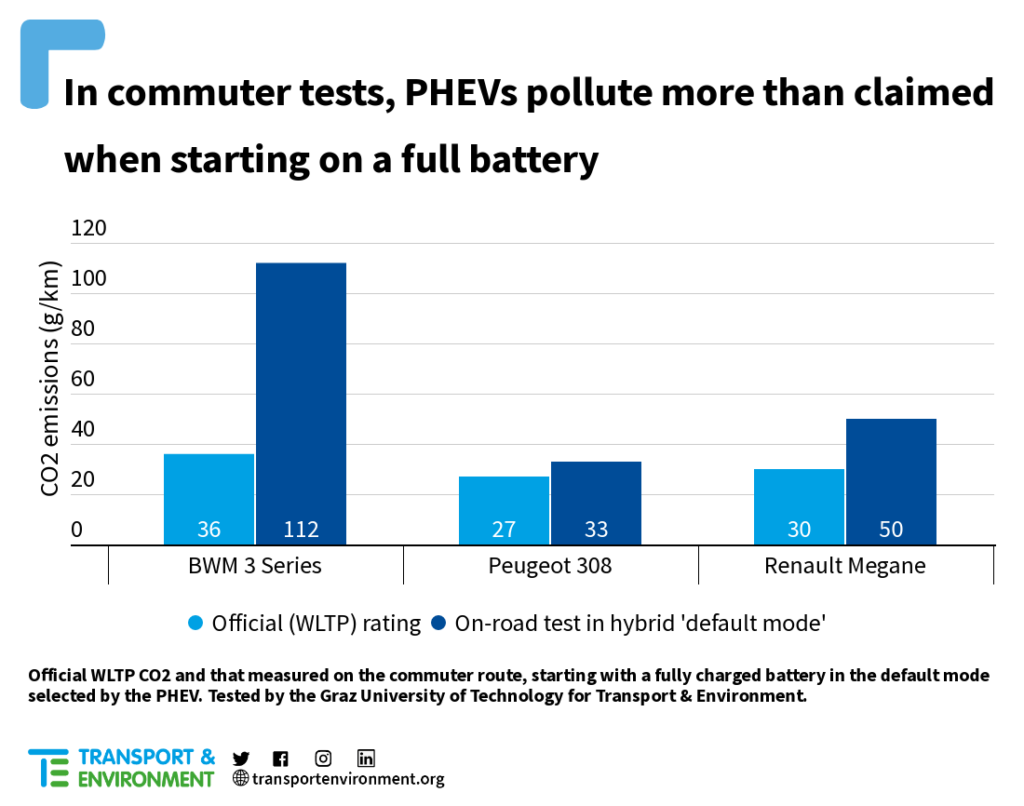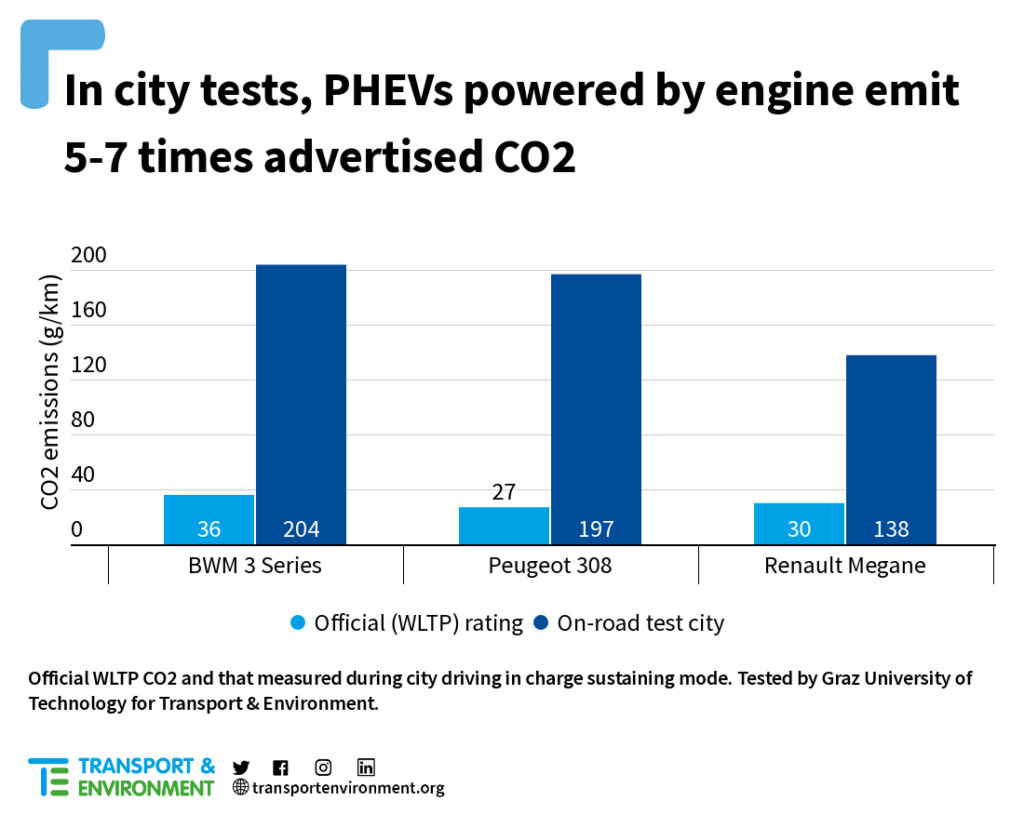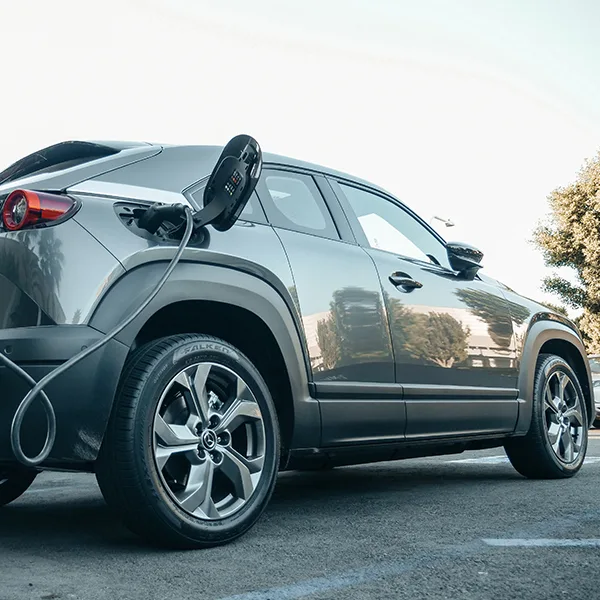It’s time to treat PHEVs based on their actual emissions after on-road tests find three BMW, Peugeot and Renault models emit more CO2 than advertised.
Plug-in hybrid cars are still presented as a climate solution, but tests on the newest generation of PHEVs indicate they pollute significantly more than claimed on city and commuter routes. Two years ago, Transport & Environment (T&E) found the technology, which contains an electric battery and a combustion engine, polluted significantly more than advertised on longer routes. It says the new tests confirm beyond doubt that lawmakers should base taxes for PHEVs on their actual pollution and stop subsidising their sale.
Three recent PHEV models, a BMW 3 Series, Peugeot 308 and Renault Megane, emitted more CO2 than advertised when tested on the road even when starting with a full battery. The BMW polluted three times its official rating when driven on a typical commuter route, according to the tests by Graz University of Technology, commissioned by T&E. The Peugeot 308 and Renault Megane plug-in hybrids performed better but still polluted 20% and 70% more than claimed, respectively, despite the relatively short round-trip distance covered (55km).

In city driving, the Peugeot had just over half (53%) of the advertised electric range on a single charge while the BMW had only 74%. Only the Renault had the electric range claimed. However, with just 50km on a single charge and no fast charging, the Renault’s zero-emissions use on commuter routes across European cities will remain limited.
Anna Krajinska, vehicle emissions manager at T&E, said: “Plug-in hybrids are sold as the perfect combination of a battery for all your local needs and an engine for long distances. But real-world testing shows this is a myth. In city tests, just one of the PHEVs has the electric range advertised, while all three emit more than claimed in commuter driving. Lawmakers should treat PHEVs based on their actual emissions.”
BMW has introduced new geo-fencing technology that automatically switches the PHEV to zero-emission electric driving in cities. However, when tested in the city of Graz, the BMW 3 Series switched on the engine twice. Tests also suggest that the BMW could be saving battery charge when outside cities in case of entry into geo-fenced areas. T&E said geo-fencing technology does not guarantee zero-emissions driving in cities and, potentially, risks increasing CO2 emissions outside such zones.
Company cars make up 71% of new PHEV sales, and research shows they drive the vast majority of kilometres on the engine and are rarely charged. When tested with an empty battery, the BMW, Peugeot and Renault emitted 5-7 times their claimed CO2 on the road. T&E said governments should end subsidies for PHEV fleet vehicles and tax them based on their pollution in the real world.

European countries spent around €350 million last year on purchase subsidies for PHEVs from BMW, Peugeot and Renault alone, T&E’s report finds. While taxpayers are forced to fork out, consumers are also hit with the higher total costs of owning plug-in hybrids, compared to battery electric vehicles. On average, an EU driver switching from the Peugeot 308 plug-in hybrid to a Citröen eC4 would save €4,800 over four years while the electric Renault Megane would save €1,300 compared to the PHEV version, and owning a Tesla Model 3 instead of the BMW 3 Series PHEV would save €2,600.
Anna Krajinska said: “PHEVs should not be treated as zero emission even if they have geo-fencing capability. Private car and company car taxes for PHEVs should be based on the actual CO2 reduction delivered. Governments should end all purchase subsidies for PHEVs in fleets and instead encourage companies to use battery electric cars which are truly zero emissions.”
Advertisement












